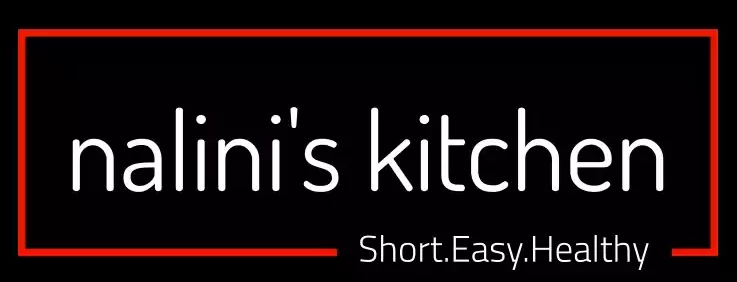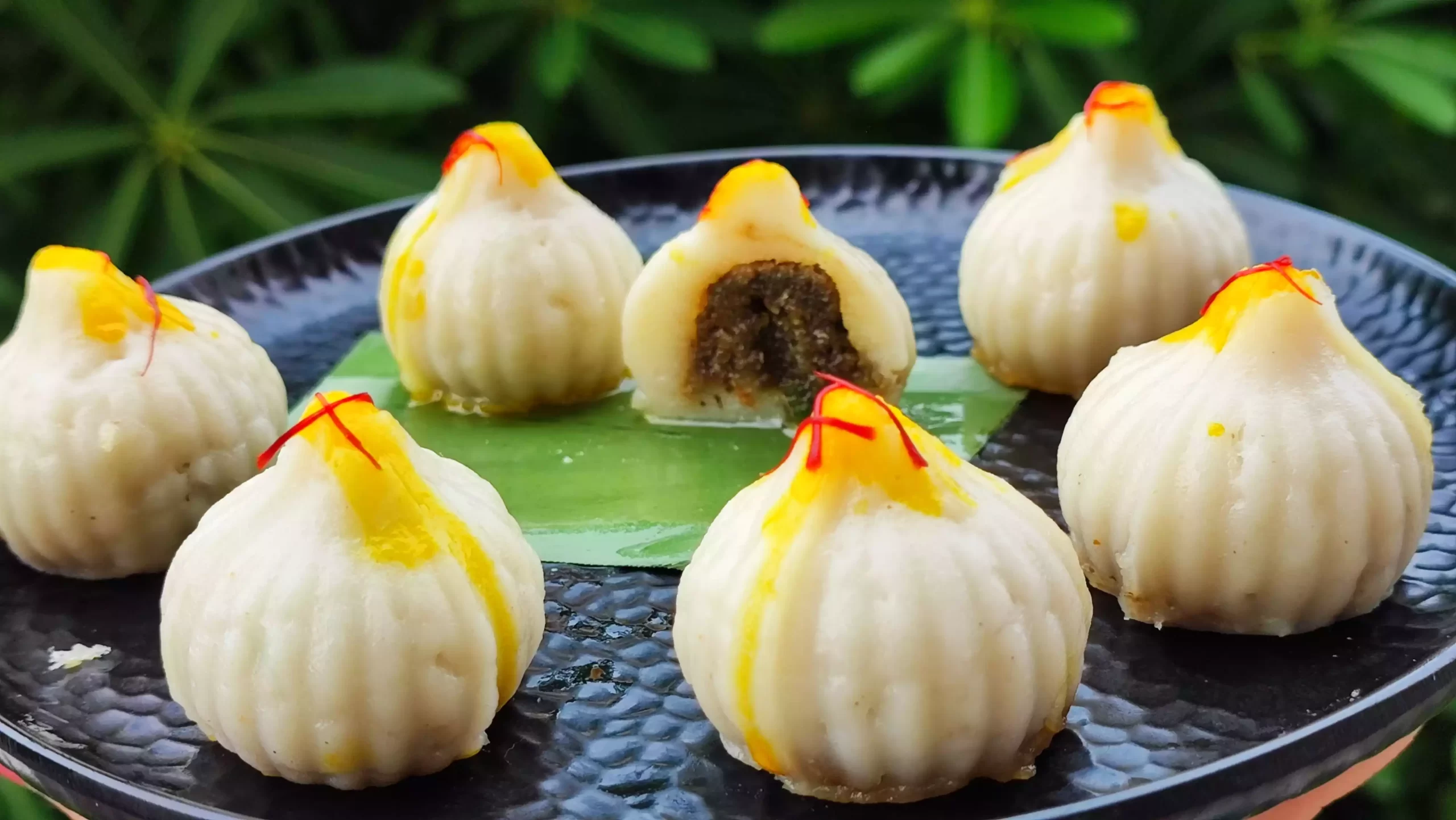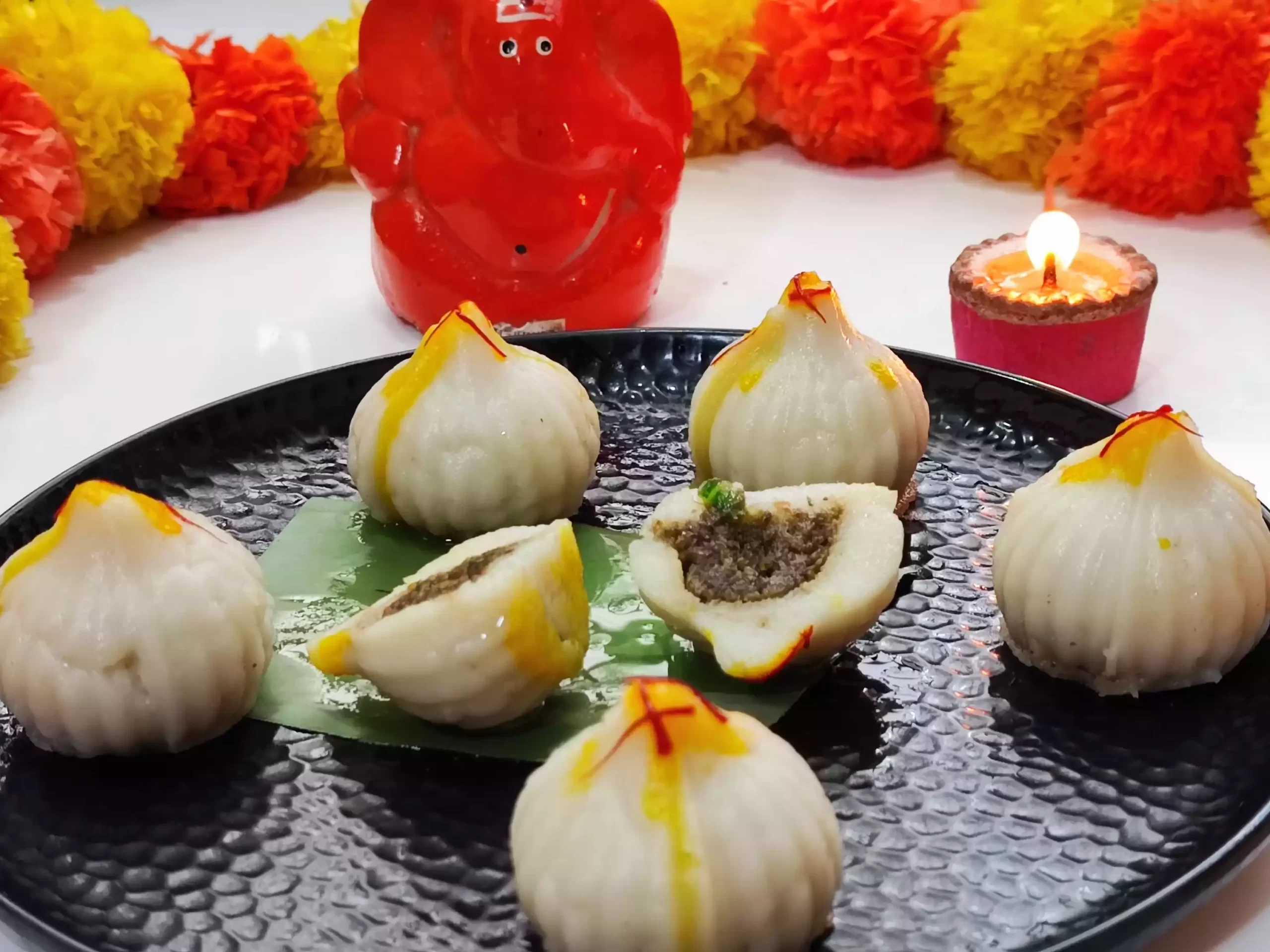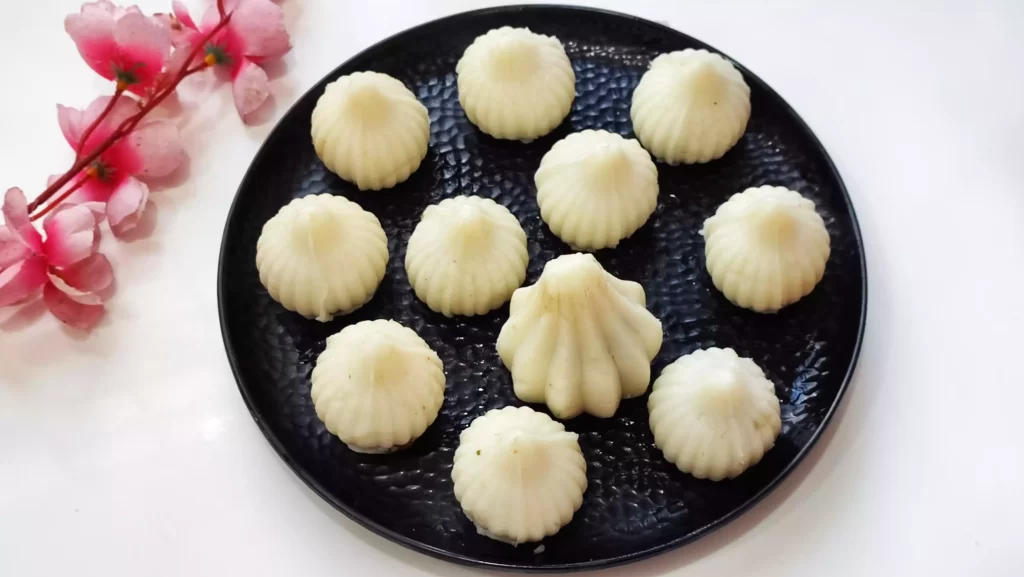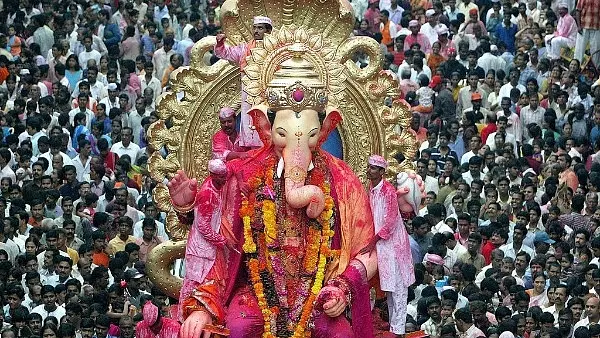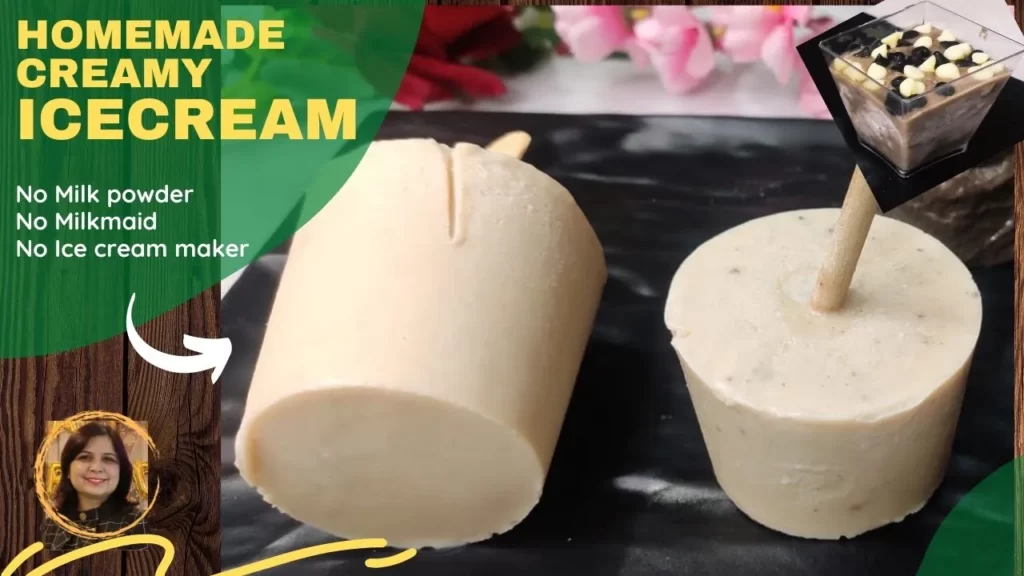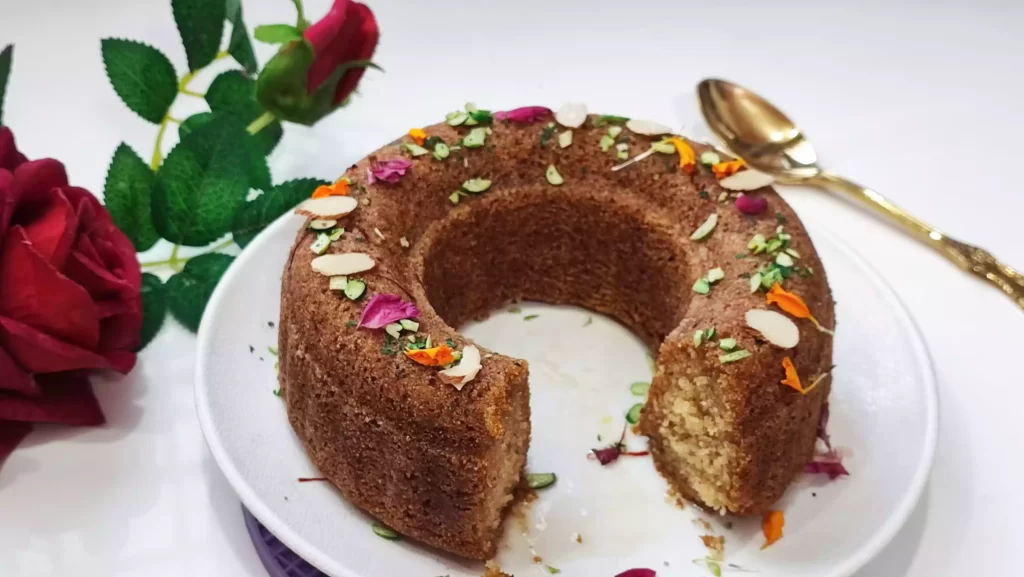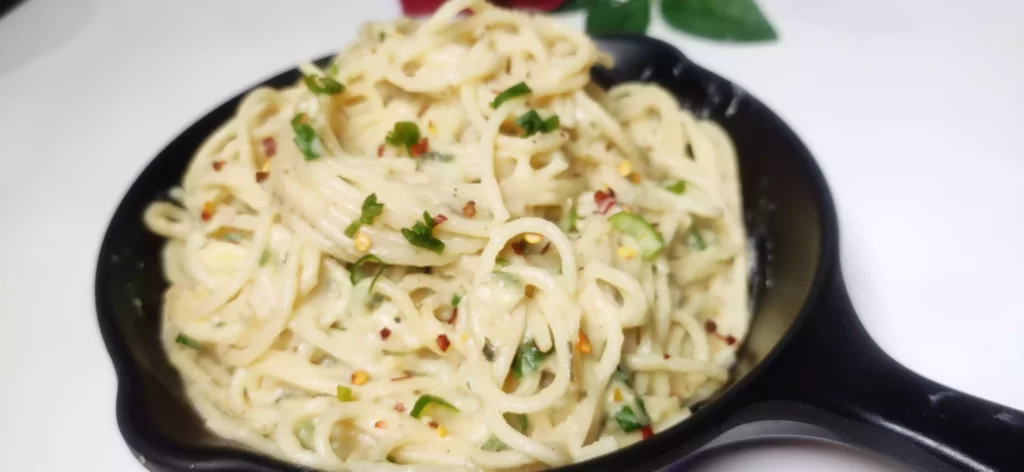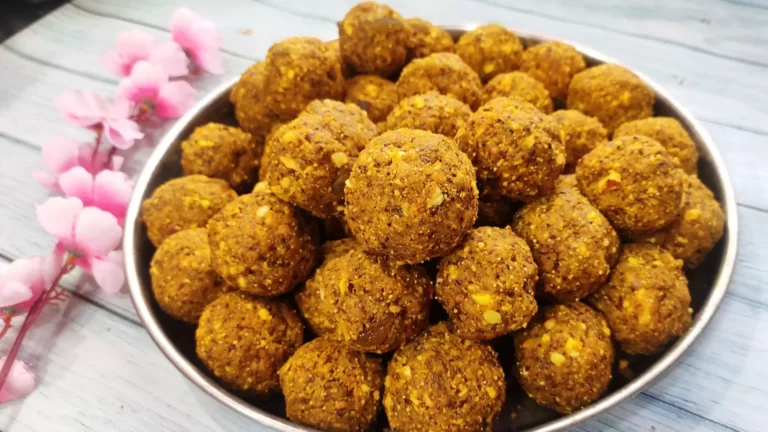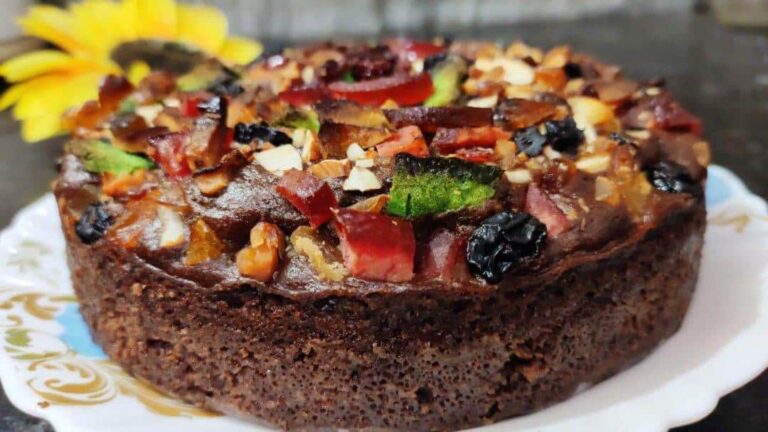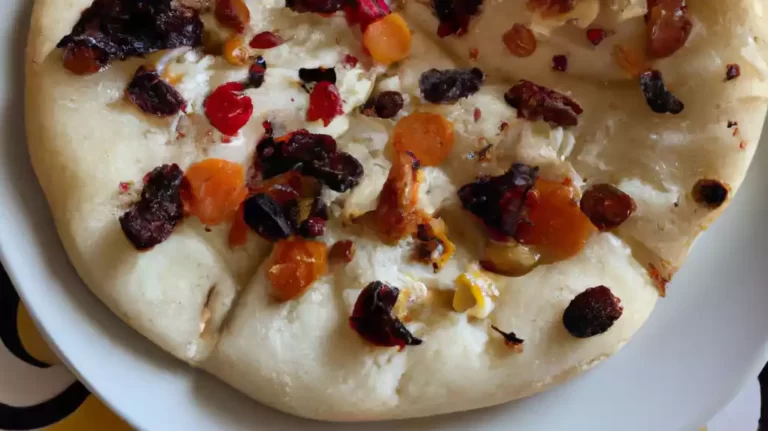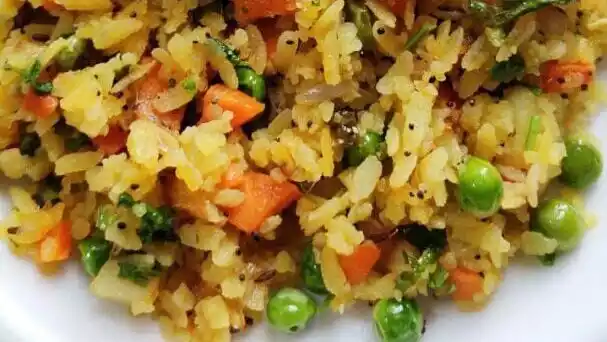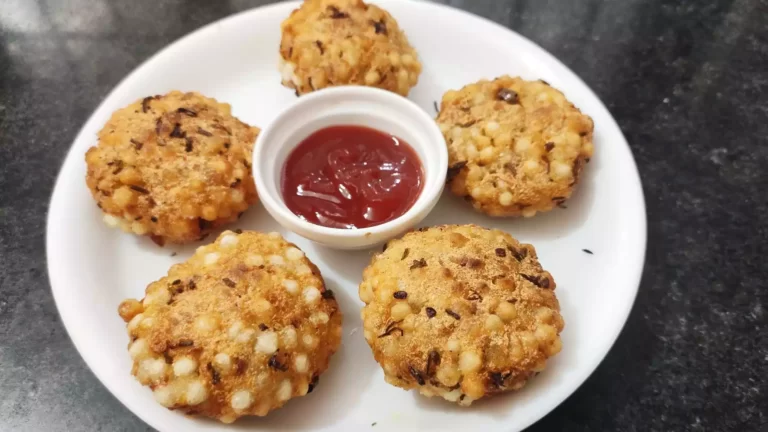From the heart of India’s rich culinary landscape emerges Ukadiche Modak, a traditional steamed dessert cherished during the festive season of Ganesh Chaturthi. This exquisite modak, with its delicate rice flour shell and sweet filling of jaggery and grated coconut, is more than just a treat for the palate. It’s an offering of love and reverence to Lord Ganesha, and a reflection of India’s vibrant cultural heritage. Step with us into the delightful journey of creating this cherished delicacy, relishing its stories and flavors with every bite.
When one thinks of Ganesh Chaturthi, the immediate image that likely comes to mind is of the jovial, elephant-headed deity, Lord Ganesha, with his beloved sweet treat nestled in his palm – the Modak. This intricate delight is not just a sweet, it’s an emotion, a timeless connection binding generations of devotees celebrating the grandeur of the festival. If you’ve been on a quest for the perfect Modak recipe, your search ends here.
The Modak, often described as a dumpling sweet, has been an integral part of the Ganesh Chaturthi festivities for ages. Its unique shape, resembling a teardrop, is believed to symbolize a purse or a bundle of joy. While its exterior is soft and pliable, the inside bursts with flavors, a melange of jaggery and coconut primarily, leaving an everlasting taste on one’s palate.
Why is it so special during Ganesh Chaturthi? Legend has it that the Modak is Lord Ganesha’s favorite treat. Hence, during Ganesh Chaturthi, households hum with the rhythm of Modak preparations, as they are offered to the deity as ‘prasad’ (a devotional offering). But beyond the legends and religious significance, the Modak remains a treat cherished by people of all ages.
Today, I’m thrilled to share my treasured Modak recipe, which has been passed down in my family for generations. Whether you’re preparing for Ganesh Chaturthi or simply wish to savor a taste of tradition, this detailed guide will ensure you create the most authentic and delectable Modaks.
So, let’s embark on this culinary journey and bring the divine taste of the Modak into our homes, just in time for Ganesh Chaturthi.
What is Modak?
Modaks are uniquely shaped, resembling a teardrop or a small purse. They have pleated edges on one side, which culminate at a point. The shape is not just aesthetically pleasing but is also symbolic in nature. The pleated design represents the folds of knowledge, while the sweet filling symbolizes the rewards of a learned life.
Over time, various modern versions and flavors of modaks have emerged, including those made with chocolate, dry fruits, and more, catering to diverse palates. Still, the traditional jaggery and coconut-filled modak remains a favorite for many, especially during religious festivities.
Modak is a traditional Indian sweet dumpling that is popularly associated with the festival of Ganesh Chaturthi. It’s believed to be one of the favorite foods of Lord Ganesha. As a result, during Ganesh Chaturthi, modaks are offered to Lord Ganesha as a prasad (devotional offering) and later distributed among devotees.
What is Ganesh Chaturthi?
Ganesh Chaturthi, also known as Vinayaka Chaturthi or Vinayaka Chavithi, is one of the most significant and popular festivals in India, particularly in the states of Maharashtra, Karnataka, Telangana, Goa, and many other parts of India. This festival celebrates the birth of Lord Ganesha, the elephant-headed deity in Hinduism, who symbolizes wisdom, prosperity, and good fortune.
Significance of the Festival
- Lord Ganesha: He is considered the God of beginnings and is invoked at the start of rituals and ceremonies. Ganesha is believed to remove obstacles and barriers, ensuring success in new ventures.
- Mythological Importance: According to Hindu mythology, Lord Ganesha was created from the dirt and sweat of Goddess Parvati’s body. He was initially created to guard her while she bathed. However, when Lord Shiva, Parvati’s husband, returned and was denied entry by Ganesha, a conflict ensued. This resulted in Shiva decapitating Ganesha. To calm a distraught Parvati, Shiva promised to bring Ganesha back to life and replaced his head with that of the first creature they came across, which was an elephant.
Ganesh Chaturthi is not just a religious festival but also a major social and cultural event, bringing communities together. The festive spirit, the chants of “Ganpati Bappa Morya”, and the devotion of the people make it a vibrant and unforgettable experience.
What is ukadiche modak?
The term “Ukadiche” in Marathi translates to “that which is steamed”, and as the name suggests, Ukadiche Modak is a steamed modak variant. It is different from normal modak in the following way:
- Texture and Appearance: The most evident difference is in the texture. Ukadiche Modak has a soft, almost melt-in-the-mouth consistency due to steaming, while the regular fried modak has a crispy outer layer.
- Flavor Profile: The steamed variant has a subtle flavor, with the rice flour allowing the taste of the filling to shine. The fried version, on the other hand, offers a balance between the crispy outer shell and the inner filling.
- Dough Composition: Rice flour for Ukadiche Modak versus potentially wheat or all-purpose flour for the regular ones.
- Health Aspect: Given that Ukadiche Modak is steamed, it’s lighter and easier on the digestive system compared to the fried counterpart.
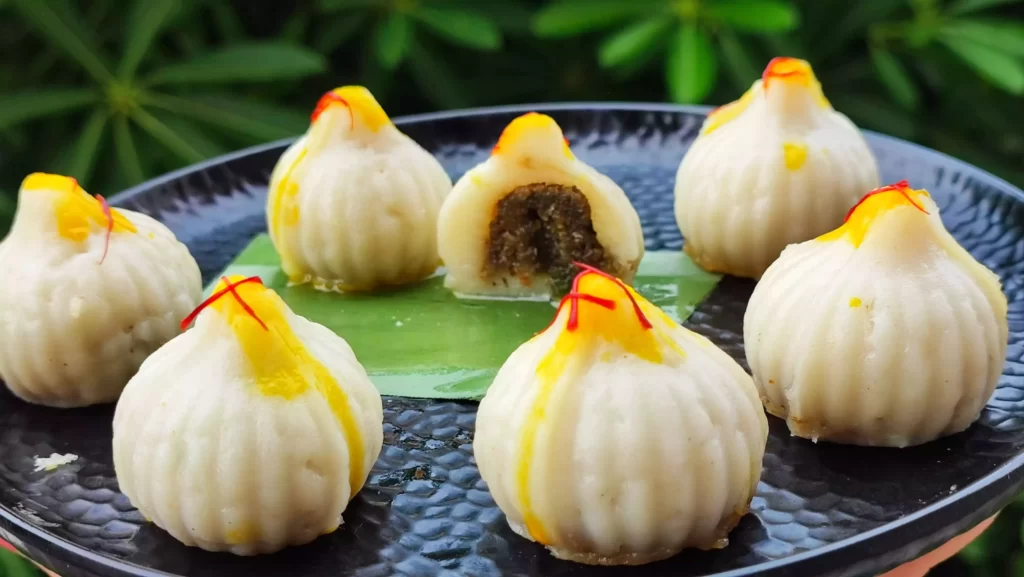
Overview of ingredients
Ukadiche Modak is a traditional Maharashtrian sweet delicacy prepared especially during Ganesh Chaturthi. “Ukadiche” means steamed, and these modaks are soft, delicate, and have a melt-in-the-mouth texture. Here’s a brief overview of the primary ingredients required to make these delicious dumplings:
- Rice Flour: The outer cover of the modak is made using rice flour. When combined with water and a bit of ghee, it becomes a soft and pliable dough, which is then shaped into a modak.
- Jaggery: This natural sweetener is an integral part of the filling. It provides the modak with its distinctive sweet taste without being overpowering.
- Fresh Grated Coconut: The bulk of the filling consists of fresh grated coconut. When combined with jaggery, it creates a rich and sweet mixture that’s both flavorful and textured.
- Ghee: A touch of ghee (clarified butter) is used both in the dough and for sautéing the filling. It adds richness to the modak and helps achieve that soft, melt-in-the-mouth texture.
- Cardamom Powder: This aromatic spice enhances the flavor of the filling, adding a delightful, fragrant note that pairs perfectly with the sweetness of the jaggery and coconut.
- Nuts and Dried Fruits (Optional): Some variations of the recipe might include chopped nuts like cashews or almonds and dried fruits like raisins for added texture and flavor.
- Salt: A pinch of salt is often added to the dough to balance out the flavors.
- Water: Necessary for preparing the rice flour dough and ensuring it’s soft and malleable.
These primary ingredients come together in a harmonious blend, making Ukadiche Modak a sought-after delicacy during festive times. The combination of the soft outer shell with the sweet and aromatic filling offers a delightful sensory experience that’s both rich and satisfying.
Frequently Asked Questions
What is the significance of offering Ukadiche Modak to Lord Ganesha during Ganesh Chaturthi?
Ukadiche Modak is believed to be the favorite sweet of Lord Ganesha, and offering it is a gesture of devotion and love. During Ganesh Chaturthi, devotees prepare these modaks as a part of the prasadam (holy offering) to please the deity and seek his blessings. The shape of the modak is also symbolic, representing a teardrop of joy and happiness.
Can I use store-bought rice flour for making Ukadiche Modak?
Yes, you can use store-bought rice flour. However, for the best results and authentic taste, it is recommended to use fresh, homemade rice flour. If using store-bought flour, ensure it’s fine and free from any lumps.
I don’t have a steamer. How can I steam Ukadiche Modak at home?
If you don’t have a steamer, you can improvise by using a large pot with a tight-fitting lid. Fill the pot with some water, place a metal colander or a perforated plate over it, ensuring that the base doesn’t touch the water. Arrange the modaks on the colander or plate, cover with the lid, and steam over medium heat. Make sure the water doesn’t dry out, and replenish if necessary.
How long can I store Ukadiche Modak?
Ukadiche Modak tastes best when consumed fresh. However, if you need to store them, place them in an airtight container and refrigerate. They should be consumed within 1-2 days for the best taste and texture. Before serving, you can lightly steam them again to refresh their softness.
Print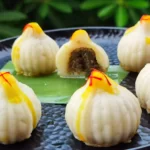
Ukadiche modak recipe – Steamed rice dumplings sweets
- Total Time: 50 min
- Yield: 20 modaks
- Diet: Vegetarian
Description
Dive into the flavors of tradition with Ukadiche Modak, a delectable steamed treat made especially for Ganesh Chaturthi. Relish the soft rice dumplings filled with sweet jaggery and coconut delight!
Ingredients
For the Outer Covering
Rice Flour: 1 cup – This forms the main ingredient for the outer shell of the modak.
Water: 1.5 to 2 cups – Used to make a dough with the rice flour.
Ghee or Clarified Butter: 1-2 tsp – It helps in adding richness to the dough and prevents it from sticking.
Salt: A pinch – Enhances the overall taste.
For the Filling
Fresh Grated Coconut: 1 cup – Provides the core texture and taste to the filling.
Jaggery (Gud): 3/4 cup – Acts as the sweetener for the filling.
Cardamom Powder: 1/2 tsp – Adds a pleasant aroma and flavor.
Poppy Seeds (optional): 1 tsp – Can be added for an extra crunch.
Ghee: 1 tsp – Used for sautéing and enhancing the flavor.
Chopped nuts (optional): Like cashews and almonds, for added richness and texture.
Instructions
Preparing the Filling
Heat the Ghee: In a non-stick pan, heat 1 teaspoon of ghee.
Add Coconut and Jaggery: Once the ghee is warm, add the grated coconut and jaggery to the pan.
Mix Well: Stir continuously to ensure even mixing. The jaggery will start melting and will mix with the coconut.
Add Cardamom and Optional Ingredients: Once the mixture is well combined, add cardamom powder. If you’re using poppy seeds and chopped nuts, add them now.
Cook Until Thickened: Continue to cook the mixture until it thickens and leaves the sides of the pan.
Cool the Mixture: Once done, remove from heat and allow it to cool.
Preparing the Outer Covering
Boil Water: In a pot, bring 1.5 to 2 cups of water to a boil. Add a pinch of salt and 1-2 tsp of ghee to it.
Add Rice Flour: Once the water is boiling, lower the heat and add the rice flour gradually, stirring continuously to avoid any lumps.
Mix and Cook: Continue mixing until the dough comes together. It should be soft and pliable, but not sticky. If it feels dry, you can sprinkle some more water.
Let it Rest: Once done, remove from heat, cover with a damp cloth, and let the dough rest for 10-15 minutes.
Shaping and Steaming the Modak
Prepare the Steamer: First, get your steamer ready. If you don’t have a dedicated modak steamer, you can use any regular steamer or even a colander placed over a pot of boiling water. Ensure that the water in the steamer is boiling before you place the modak in it.
Shape the Modak: Take a small amount of dough and shape it into a ball. Flatten it with your fingers to make a small disc. Now, place a spoonful of the prepared filling in the center. Pleat the edges of the disc and bring them together, sealing the filling inside. You can use a modak mould if you have one.
Steam the Modak: Place the shaped modak on a greased steamer plate. Ensure they don’t touch each other to avoid sticking. Cover and steam for 10-15 minutes on medium heat.
Check the Readiness: The modaks are done when they appear glossy and translucent.
Notes
Ukadiche Modak is a traditional steamed sweet dumpling made with rice flour and filled with jaggery and coconut. Ensuring the right consistency in the dough and careful sealing of the filling are key. Serve freshly steamed with a dollop of ghee for an authentic taste.
- Prep Time: 30 min
- Cook Time: 20 min
- Category: Desssert
- Method: Steaming
- Cuisine: Indian
Nutrition
- Serving Size: 1
- Calories: 106 Cal
- Sugar: 11g
- Sodium: 39mg
- Fat: 2g
- Saturated Fat: 2g
- Unsaturated Fat: 2g
- Carbohydrates: 20g
- Fiber: 1g
- Protein: 1g
- Cholesterol: 1mg
Keywords: Ukadiche Modak, Ganesh Chaturthi, Steamed Dumpling, Indian Dessert, Vegetarian Recipe
Things to remember
- Quality of Ingredients: Always ensure to use fresh and good quality ingredients, especially the rice flour and jaggery. Freshly grated coconut is preferable over frozen or desiccated coconut for authentic taste.
- Rice Flour Consistency: For a smooth and pliable dough, the rice flour should be fine without any lumps. If your rice flour feels coarse, consider sieving it before using.
- Water to Rice Flour Ratio: The ratio of water to rice flour is crucial. Too much water can make the dough sticky, while too little can make it crumbly. Adjust accordingly, and always start with less water, adding more as needed.
- Kneading: Once the rice flour is mixed with hot water, knead the dough while it’s still warm. Use a damp cloth to cover the dough to prevent it from drying out.
- Shaping Modaks: Shaping modaks, especially if done by hand, requires a gentle touch. The edges should be thinner than the center to seal the filling properly. If you’re new to this, consider using a modak mould which can make the process simpler.
- Steaming Time: Do not over-steam the modaks; this can make them rubbery. They are done when they turn slightly translucent and glossy.
- Cooling: Once steamed, allow the modaks to cool for a few minutes. This makes it easier to remove them from the steamer without breaking.
- Serving: Ukadiche Modak is traditionally served with a dollop of ghee. For an enhanced flavor, you can also use clarified butter (ghee) infused with a pinch of cardamom.
- Storing: If you have leftovers, store them in an airtight container in the refrigerator. To reheat, you can steam them again for a few minutes or microwave them on a low setting.
Modak, a cherished Indian dessert, holds a special place in the hearts of many, particularly during the vibrant festival of Ganesh Chaturthi. This blog post delves deep into the intricate world of this sweet treat, beginning with an insightful introduction that paints a vivid picture of its cultural importance. We specifically explore Ukadiche Modak, a distinct variation steamed to perfection, setting it apart from the conventional modak most are familiar with.
To ensure every reader can craft this delicacy, we have provided an exhaustive list of ingredients, detailed instructions, and handy preparation notes that are beginner-friendly. For those curious about its nutritional content, a comprehensive breakdown reveals the caloric, fat, sugar, and other essential nutrients found in each serving. The culmination of tradition, taste, and technique, this blog is the ultimate guide to mastering and understanding the nuances of Modak, ensuring that both novices and seasoned cooks can relish and recreate this timeless recipe with ease.


